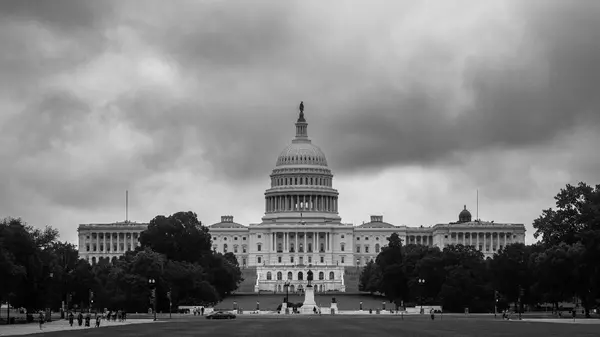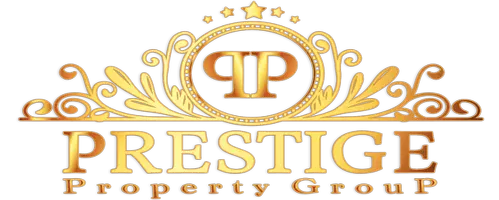Once Controversial, Reverse Mortgages Are Back. Are They Safer This Time?
A growing number of older Americans are borrowing against their homes, using a once controversial loan product that’s gone through some major changes since it dominated headlines a decade ago.
New data from the Federal Housing Administration and the Department of Housing and Urban Development show demand for federally backed reverse mortgages has jumped 6.25% in the last fiscal year—a sharp reversal after two years of decline. But that growth pales in comparison to its future projected growth: The global market is expected to swell from $1.83 billion in 2023 to $2.71 billion by 2030, according to a report from Grand View Research.
The timing is no coincidence. With 80% of seniors—about 34 million households—unable to weather a major financial shock like illness or long-term care, millions are turning to their home equity as a last line of defense.
Some consumer advocates warn that this surge could expose vulnerable borrowers to new forms of debt, confusion, and foreclosure risk. But modern lenders insist that those views are outdated.
“This is a safe and regulated category. This category is regulated directly by HUD and the FHA,” explains Chris Moschner, chief marketing officer of Finance of America, one of the country’s largest reverse mortgage lenders.
“People believe these products are for lower-income, desperate people … but these products are actually for everybody who’s either entering or thinking about retirement and owns a home,” he adds.
After years of scrutiny and reform, reverse mortgages are reemerging as a regulated, flexible tool for older homeowners—though not without fresh concerns over what happens when these loans go wrong.
How the reverse mortgage has changed
In 1961, Nelson Haynes, a banker at Deering Savings & Loan in Portland, ME, was searching for a way to help the widow of his former high school football coach stay in her home after her husband’s death. Like millions of retirees today, she was caught between rising living costs and a fixed income that couldn’t keep up.
Haynes’ fix was radical for its time: a loan that allowed her to draw cash from her home’s equity without selling it and without carrying payments. It was the first reverse mortgage.
It would take two decades before his product went mainstream and received government backing from the FHA and HUD under a new name: the Home Equity Conversion Mortgage.
By the 1990s, the concept was gaining traction. Government-backed reverse mortgages grew an average of 64% per year throughout the decade, according to data from the National Reverse Mortgage Lenders Association. Even so, total volume remained small, just 3,500 loans annually on average.
That changed in the early 2000s, when reverse-mortgage lending exploded. Volume peaked at nearly 115,000 loans in 2009, and by 2012, more than 775,000 were outstanding. And within just five years, nearly 90,000 seniors had fallen a year or more behind on property-tax and insurance payments for their homes, according to a report from HUD, putting their homes, and the very equity they’d borrowed against, at risk of foreclosure.
Since then, the product has gone through a series of regulatory overhauls aimed at preserving its benefits while reducing the risks that once made headlines. Many of those reforms emerged in the wake of the 2008 financial crisis, when the broader mortgage industry underwent sweeping changes.
By 2017, the FHA had introduced new measures to strengthen the program’s long-term health—lowering the maximum amount of equity homeowners could borrow (known as the principal limit), adjusting upfront and annual mortgage insurance premiums, and requiring a formal collateral risk assessment for higher-value properties.
“There’s actually third-party counseling that’s required when you buy a reverse mortgage … to help you determine if this is the right loan,” explains Moschner.
The industry has also diversified. A growing share of loans are now proprietary products—private versions modeled on the traditional HECM but not government backed. These newer offerings can serve younger borrowers, generally age 55 and up, and carry higher borrowing limits—up to $4 million in the case of Finance of America’s HomeSafe loan. Some even allow homeowners to borrow against their equity without disrupting a low-rate primary mortgage, much like a HELOC.
Once criticized as risky or opaque, today’s reverse mortgages are designed to offer borrowers more flexibility and choice. But as consumer advocates point out, regulation alone doesn’t erase risk, and the product’s evolution continues to test how safe “safe enough” really is.
Who’s using them today and why
Once thought of as a last resort for cash-strapped retirees, today’s reverse mortgage borrower looks different.
Moschner says the borrowers FOA is working with are trending younger and wealthier than in previous years. The average home securing a reverse mortgage with his company is now worth around $700,000, compared with the national median of roughly $420,000.
“People often think of our category as being primarily for low-income borrowers or people who don’t have many other options,” says Moschner. “But that really is an outdated stigma.”
According to Moschner, the most common reason homeowners take out a reverse mortgage remains straightforward: to eliminate an existing mortgage payment and free up cash each month.
But many borrowers aren’t stopping there. A growing share are using their home equity to make their properties more livable for the long haul—adding ramps, wider doorways, first-floor primary suites, and walk-in tubs.
“People are modifying their homes to make it easier on themselves as they age,” says Moschner. “This term is typically called age-proofing.”
Others are tapping their home’s value to supplement income, cover medical or caregiving costs, or even help a child or grandchild pay for education. Though the latter is not the most common motivation, it reflects a growing trend of older homeowners using their wealth to ease financial pressure on younger generations.
Perhaps the most surprising way seniors are using reverse mortgages today is to buy rather than borrow against a home they already own. Through a federally backed option called a HECM for Purchase, eligible borrowers can use the equity in their current home to buy another—often closer to family or in a more manageable location—without making a down payment.
“If you have sufficient equity in your current home, you can actually buy a new house without taking $1 out of your bank account,” says Moschner.
The persistent risks
Even as reverse mortgages evolve, the product still carries risks that can catch borrowers and their families off guard.
Unlike traditional loans, repayment isn’t chipped away at with a monthly payment. Instead, it’s due when the homeowner moves out or dies. But confusion often arises over what happens next: Heirs must either repay the loan or sell the property, and some discover too late that the balance owed has grown faster than expected.
Borrowers can also face foreclosure if they fail to keep up with property taxes, homeowners insurance, or required maintenance. These obligations remain even after the mortgage payments stop, though in the past, some borrowers weren't aware of these enduring responsibilities.
But Moschner stresses that increased education for borrowers has helped clarify these requirements, and he focuses on the benefits: “You continue to maintain title and ownership of your home with a reverse mortgage,” explains Moschner, “provided that you continue to comply with loan terms.”
Some advocates maintain their concern, warning that even when lenders act responsibly, the fallout from reverse mortgage foreclosures can ripple far beyond individual borrowers.
“What we're currently seeing are reverse mortgage volumes normalize a bit, now that interest rates have slightly dropped,” says Sarah Edelman, executive vice president of policy and programs at National Community Stabilization Trust. “Still, as advocates for sustainable communities and affordable homes, we’re concerned about what happens when these homes go through foreclosure.”
Edelman and other housing advocates point to recent changes in federal policy that could make it harder to preserve foreclosed homes for community use. For years, HUD's "first look" program gave nonprofits, community developers, and individual homebuyers a chance to purchase foreclosed homes before investors could step in, helping keep those properties affordable and neighborhood stability intact.
That safeguard has now been waived for homes tied to distressed asset sales, removing that community-first opportunity altogether. And even where the rule still applies, Edelman notes, the time frame has been shortened.
Why reverse mortgages could keep growing
Despite lingering skepticism, the reverse mortgage market is poised for significant expansion. The reasons have less to do with Wall Street than with simple demographics.
“There’s like 50 to 60 million households that could qualify for a reverse mortgage today,” says Moschner. “And we’ve only penetrated about 2% of the market.”
That untapped potential is fueled by an unprecedented shift in the nation’s age makeup. Within the next decade, seniors will outnumber children for the first time in U.S. history, according to Census projections. At the same time, roughly 75% of older Americans say they want to age in place, even as the cost of living and long-term care continue to climb, according to the AARP.
“There’s now over $14 trillion—that’s trillion with a T—of home equity that’s available that people can tap into,” Moschner adds. For many retirees, that home equity represents their single largest source of wealth, and increasingly, their fallback plan for financial stability.
Categories
Recent Posts










GET MORE INFORMATION

